
Month: June 2016
Luxman M-200 Stereo Power Amplifier
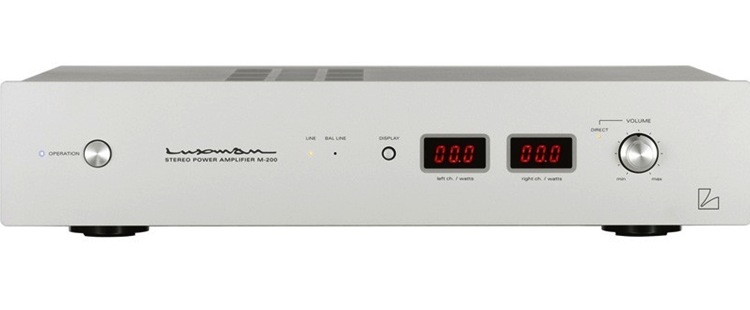
(Images courtesy of On a Higher Note, LLC)
If the amplifier budget for your bedroom or office stereo (or some other modest but high-quality audio system) stretches to multiples (about five times as much) of the price of the over-performing at its price point ($349) Parasound Zamp v.3, I heartily recommend Luxman’s (US MSRP) $2000, refined and elegant M-200 power amplifier.
(Note, the M200 has a defeatable front-panel manual-only volume knob, so its inputs can be set either to Direct or Variable, allowing it to be used with one fixed-output source such as a CD player. Luxman also makes a matching DAC/pre with the same form factor, the DA-200.)
The M-200’s output is “only” 25Wpc, but I found it completely capable of driving the prototype Esperanto Parolanto loudspeakers, a moderately inefficient load (83dB/1W/1m). The M-200 runs warm, but in my experience, it never ran hot. Continue Reading →
Rodion Shchedrin: “Carmen-Suite,” after Bizet
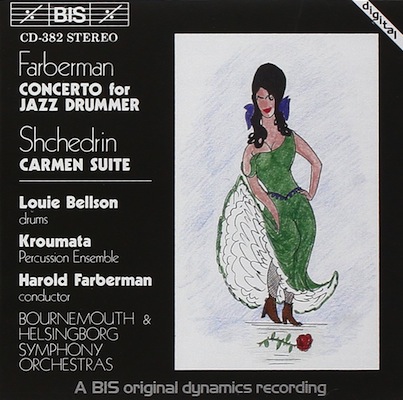
Rodion Shchedrin: Carmen-Suite for strings and 47 percussion instruments, after Bizet (written 1967)
CD BIS 382 (recorded 1987)
(No high-resolution download available, apparently.)
Kroumata Percussion Ensemble, Helsingborg Symphony Orchestra, Howard Faberman, conductor; Robert von Bahr, producer; Siegbert Ernst, engineer.
Talk about a Guilty Pleasure. An email from Jason McCrary of Reference Audio (one of my Esperanto Audio dealers) finally made me sit down and listen all the way through Rodion Shchedrin’s Carmen-Suite, from the 1967 Alberto Alonso ballet. An LP-loving (and vacuum-tube-loving) customer had turned Jason on to the EMI LP with Gennady Rozhdestvensky and the Bolshoi Theatre Orchestra. The original of that LP is out of print. According to the LP-sales database Popsike, it has fetched between $21 and $142 used, with a median of $48, and a mean of $54. There is (or was) a 180-gram LP reissue (at least in Germany and Switzerland).
The guilty-pleasure aspects of Shchedrin’s score are first the orchestration—strings only, plus four percussionists playing a total of 47 different percussion instruments (to give that word a very wide scope)—while the other guilty pleasure is the affectionate cheekiness of Shchedrin’s musical tamperings. Continue Reading →
Vladimir Feltsman: J.S. Bach, The French Suites
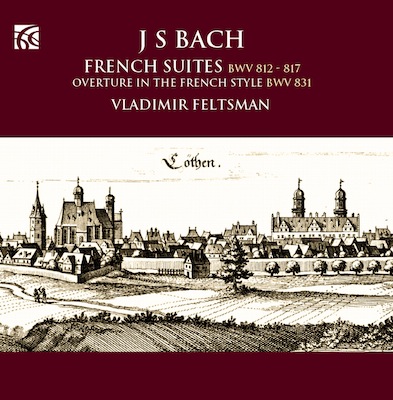
Vladimir Feltsman: J. S. Bach, The French Suites BWV 812-817; Overture in the French Style BWV 831.
Nimbus 2-CD set NI 6314
(No high-resolution download available, apparently.)
This wonderful 2-CD set will make a great gift for a friend who does not listen to a lot of classical music. That’s largely because the music is as accessible as it is beautiful. And while these recordings could serve as background music for other activities, they will also reward close attention during repeated hearings.
Vladimir Feltsman was born in the Soviet Union in 1952. He made his début with the Moscow Philharmonic at age 11. (Interestingly enough, his father Oscar was a composer of popular songs and musical comedies.) Unhappy with political interference in the arts, in 1979 Feltsman applied for an exit visa, the result being eight years of virtual artistic non-person-hood.
Arriving in the US in 1987, he was widely feted, starting at the White House. Today, Feltsman might be verging perilously close to “Elder Statesman” status, except that his playing exhibits youthful vitality and genuine enthusiasm, all without a trace of self-importance. Continue Reading →
Bricasti M1 “Limited” Digital-to-Analog Converter
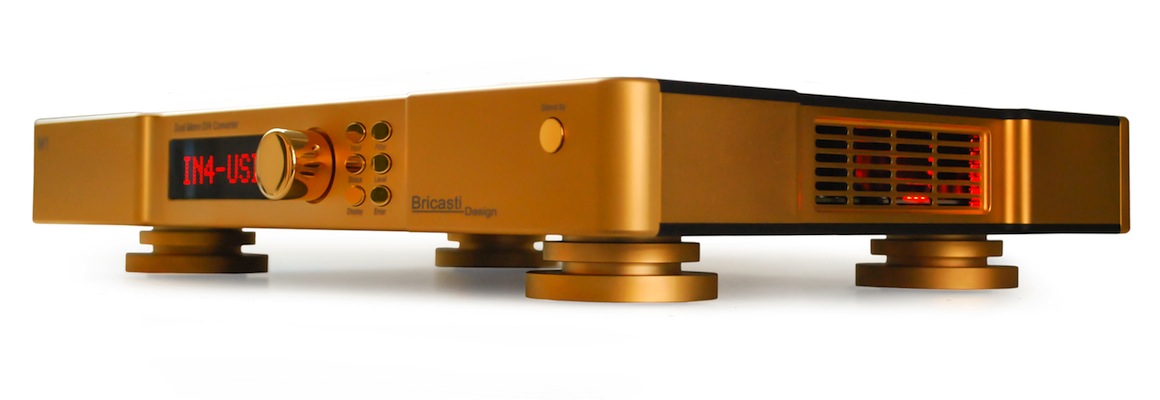
Yes, what you see is what you get (if Santa Claus really likes you, that is): A Bricasti M1 Digital-to-Analog Converter with gold-plated casework. United States Manufacturer’s Suggested Retail Price, $15,000. (Why do I hear echoes of Auric Goldfinger gloating, “No, Mr. Bond; I expect you to die!“)
Bricasti is a Massachusetts, USA company that was started by three exiles from Harmon International’s Lexicon division: Brian, Casey, and Tim. Hence the corporate name, which would warm the cockles of any trademark lawyer’s heart: Yes! Unique! My puckish sense of humor has at times led me to suggest to the unwary that “Bricasti” is the coastal resort town just North of Brindisi. As Peter McGrath would say, that has the ring of “near-truth” to it.
Bricasti, no surprise, started out in the professional-audio field, offering a “we will cut no corners” reverberation unit that quickly became the Gold Standard in its field. Why? Well, cutting no corners is a good place to start. Continue Reading →
The Rosenberg Trio: “For Sephora.”
The Rosenberg Trio is made up of its lead guitarist, the charmingly named Stochelo Rosenberg (which for some reason always makes me think of high-school chemistry class) and his cousins the rhythm guitarist Nous’che Rosenberg and upright bassist Nonnie Rosenberg.
Seeing as all three are members of the Dutch Gypsy (or Roma) community, of course they have been hugely influenced by Django Reinhardt. [Note: I am aware that use of the term “Gypsy” is controversial in some quarters. However, the Rosenbergs themselves use that word on their own website; so, they most likely are not offended by it.] If I might brag—just a bit—I am only one handshake away from Django, through Stéphane Grappelli (the violinist who, with Reinhardt, co-founded the Quintette du Hot Club of France in 1934).
More, after the jump. Continue Reading →
Grace Design m920 (Steinway and Sons office systems, Part IV)
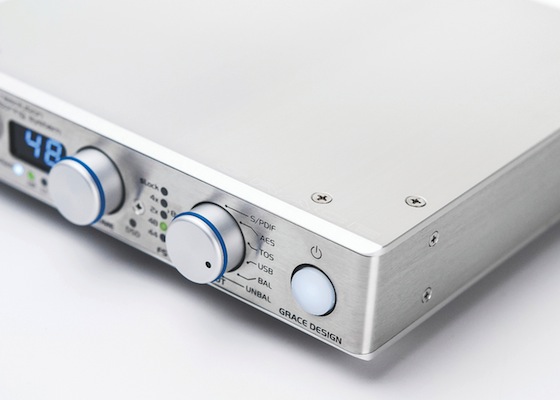
Grace Design m920 (Steinway and Sons office systems, Part IV)
Digital-to-Analog Converter, Line Stage, and Headphone Amplifier
Made in Lyons, Colorado, USA; US MSRP $1995
For the stereo systems I specified for use in two of the executive offices at Steinway and Sons’ global headquarters in New York City, my major design goals were fatigue-free yet detail-rich listening (for hours at a time), flexibility, and future-proofness. Given that the major source was going to be USB computer audio or wireless streaming, I wanted a digital-audio source component that had multiple digital inputs, the ability to decode not only conventional PCM digital data but also Direct Stream Digital (DSD) files, was of professional-grade build quality, and which sounded just plain great. Oh, and also not break the budget. (Note, the Grace m920 on its own does not handle wireless; in these systems, an Audioengine wireless receiver unit outputs S/PDIF to the m920 via a Toslink optical digital cable.)
Grace Design’s m920 DAC/HPA/linestage filled that bill admirably. Please click through to learn more, and also to learn how to get an additional $100 off the lowest advertised price, as a thank-you for reading The Tannhaüser Gate! Continue Reading →
Jane Monheit: “Taking a Chance on Love”
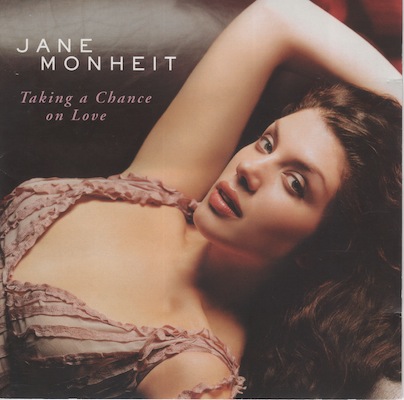
Jane Monheit: Taking a Chance on Love
Recorded at Avatar Studios, NYC, March-May 2004; released on CD September 2004.
CD Sony Classical SK 92495
(No high-resolution download found.)
Jane Monheit, vocals; Michael Kanan, piano; Orlando Le Fleming, bass; Rick Montalbano, drums; Miles Okazaki, guitar; various guests; Alan Broadbent, arranger and conductor; Peter Asher and Al Schmitt, producers; Al Schmitt, engineer.
“Great American Songbook” singer Jane Monheit’s début studio album for Sony Classical Taking a Chance on Love is in many ways the opposite bookend to Harry Connick, Jr.’s We Are In Love, which I wrote about here. After all, both titles use the “L” word… .
However, the important difference is that Harry Connick’s voice is of the “boy next door” variety, whereas Jane Monheit’s voice is of the “girl next door” variety, but only if you live next door to the Manhattan School of Music. Monheit’s own website is here; her Wiki is here.
Sound bytes, a YouTube, and more, on the continuation page. Continue Reading →
Pentatonix: “ ‘Can’t Sleep’ Love”
I used to be a choral singer—I started as a Boy Soprano, no less (the Brits call them “trebles”).
There was something so satisfying about those (admittedly rare) moments when the pitches and the blend were really perfect. It even happened once, totally by accident, with my two older brothers and me. I think we were singing a Harry Belafonte song. (Yes, I knew about Harry Belafonte before he became something of an audiophile vinyl icon.)
We So Rarely Hear About the Good That Is Done in the World
It almost goes without saying that the mainstream media long ago fell into a sensationalist rubric of, “If it bleeds, it leads.” So a Jeremiad from me about that would be almost pointless.
Please click for the continuation. Continue Reading →
Alexander Toradze: Shostakovich Piano Concertos 1 & 2

Alexander Toradze: Shostakovich Piano Concertos 1 & 2
Recorded June 2010 and August 2011, hr-Sendesaal, Frankfurt, Germany
CD Pan Classics PC 10261
(No high-resolution download available, apparently.)
Alexander Toradze, piano; Jürgen Ellensohn, trumpet in Piano Concerto No. 1; George Vatchnadze, piano in Concertino Op. 94; Frankfurt Radio Symphony Orchestra, Paavo Järvi, conductor.
In writing about Yevgeny Sudbin’s recent Scarlatti recording, I mentioned the Jungian Synchronicity that a few weeks before I downloaded the review copy of Sudbin’s recording, I had been engaged as a substitute to review for the Providence Journal a Rhode Island Philharmonic concert featuring Alexander Toradze playing Rachmaninoff’s Third Piano Concerto. Further, that for his encore, Maestro Toradze played the same Scarlatti “Aria” sonata that brings down the curtain on Sudbin’s program.


